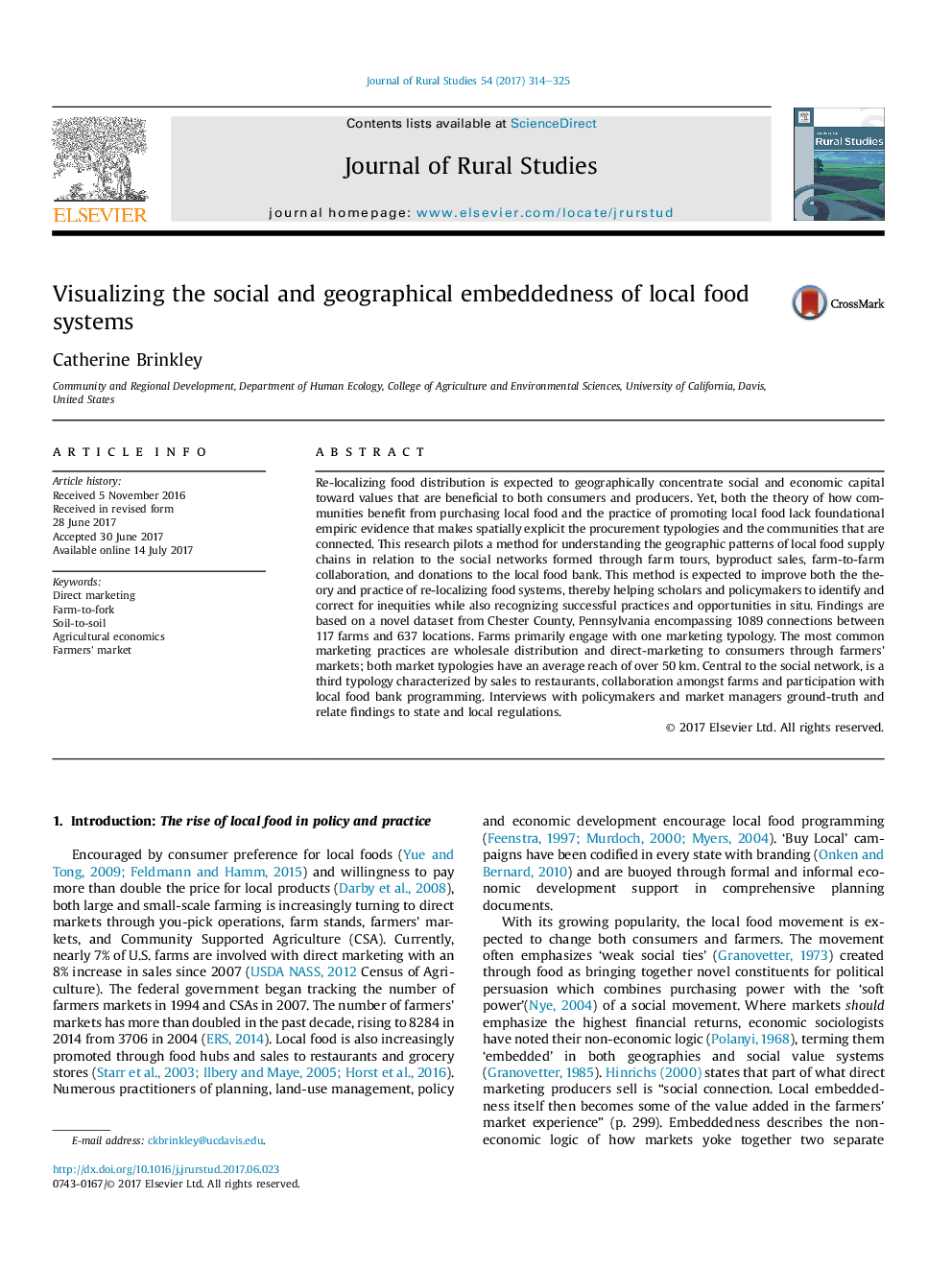| Article ID | Journal | Published Year | Pages | File Type |
|---|---|---|---|---|
| 6460068 | Journal of Rural Studies | 2017 | 12 Pages |
â¢This research presents and tests a novel method to measure the geo-spatial embeddedness of farm-to-market networks.â¢Analysis reveals three distinct geo-spatial marketing niches.â¢This method can be used to identify spatial and social synergies or opportunities for local food system actors.â¢The local food bank plays an important role in the local food system and land-use planning.
Re-localizing food distribution is expected to geographically concentrate social and economic capital toward values that are beneficial to both consumers and producers. Yet, both the theory of how communities benefit from purchasing local food and the practice of promoting local food lack foundational empiric evidence that makes spatially explicit the procurement typologies and the communities that are connected. This research pilots a method for understanding the geographic patterns of local food supply chains in relation to the social networks formed through farm tours, byproduct sales, farm-to-farm collaboration, and donations to the local food bank. This method is expected to improve both the theory and practice of re-localizing food systems, thereby helping scholars and policymakers to identify and correct for inequities while also recognizing successful practices and opportunities in situ. Findings are based on a novel dataset from Chester County, Pennsylvania encompassing 1089 connections between 117 farms and 637 locations. Farms primarily engage with one marketing typology. The most common marketing practices are wholesale distribution and direct-marketing to consumers through farmers' markets; both market typologies have an average reach of over 50Â km. Central to the social network, is a third typology characterized by sales to restaurants, collaboration amongst farms and participation with local food bank programming. Interviews with policymakers and market managers ground-truth and relate findings to state and local regulations.
